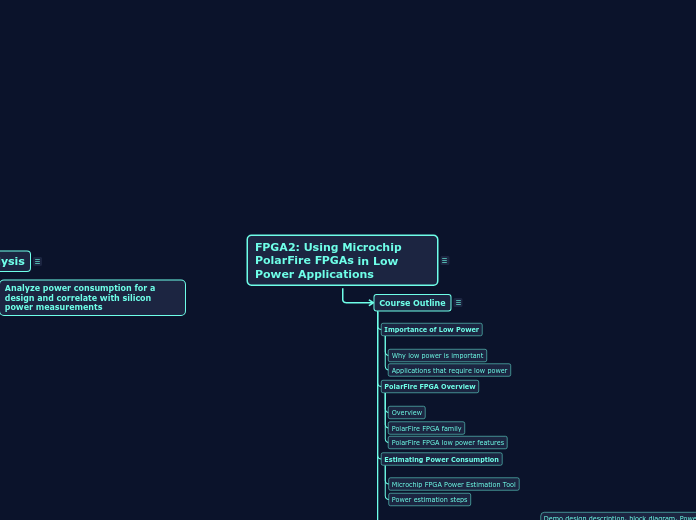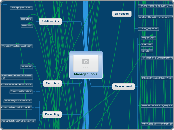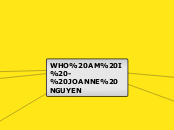Requirements
Coaching Interview 1. Gather top-level project constraints.
Interview SME and sponsor to fill in each of the requested constraints.
Major Tasks
What are the major engineering tasks required in order to accomplish the Job Outcome?
For a Job Outcome of "Custom LoRaWAN demo application using the SAMR34 Module", we could have the following tasks:
- Evaluate the functional fitness of the SAMR34 for the demo application
- Build/purchase a hardware prototype for the application
- Download/Install firmware development tools
- Write and test firmware for the application
etc...
Major Task 3
PolarFire intro, how it is low power
Importance of low power
Implementation and Delivery Constraints
Course Type (Lecture-Only, Hands-On)?
Course Duration (Hours)?
Number of instructors required?
~1.5 hour
Libero sw, power calcuator, PolarFire board
Lecture, demo
Target Audience
Who are the major audience groups the training is targeted to?
Expected background knowledge and experience level?
Already familiar with FPGA design implementation
Be familiar with FPGA design flow, tools
Major Job Outcome
What will Attendees be able to produce or accomplish back on the job after taking this training? State it as a noun-phrase, for example:
"Customized LoRaWAN demo application using the SAMR34 Module"
Due Date
3/31/21
Job/Task Analysis
Coaching Interview 2. Perform Job/Task Analysis
Work with the SME to analyze major tasks into subtasks (where necessary), placing the tasks in approximate order of completion.
For each task/subtask, identify what the student needs to know or be able to do to perform the task.
Knowing refers to understanding of certain concepts, facts or principles. Doing refers to the ability to perform certain actions or procedures
This becomes the enabling content for the course outline:
concepts, facts, principles will map to lessons
procedures will map to hands-on exercises
Example Task Analysis: "Press the Enter key on a computer keyboard"
Enabling Content:
Knowledge: (Concept) What is a computer keyboard?
Knowledge: (Concept) What is a computer key?
Procedure: How to recognize the Enter key
Procedure: How to know if a key has been pressed
Be thorough in the analysis. You can decide later whether a particular concept or procedure is necessary to cover in your course (for instance, if the student already has this skill).
Analyze power consumption for a design and correlate with silicon power measurements
FPGA2: Using Microchip PolarFire FPGAs in Low Power Applications
Replace "Course Title" with your course title.
Add course title abstract here
Course Outline
Coaching Interview 3. Develop a Course Outline
From the Job/Task analysis, group content together into chapters and name the chapters.
"Knowledge" (Concept/Fact/Principle) bubbles map to "Lessons"
"Action" bubbles map to "Lab Exercises" or "Quizzes" or other hands-on activities.
Typically, a 1:1 relationship exists between Major Tasks and Chapters. However, you are free to group knowledge and actions from several different Tasks into the same Chapter in the course outline.
When finished, the TTE will produce a course outline in word format that captures this structure.
Summary
Links to demo software -> syllabus
Where to learn more (details of each family) -> Syllabus
Where to go next
Summary of training
Power reduction tips
Reducing clock tree power
PLL power reduction
Reducing SRAM power consumption
Dynamic Power Profile
PolarFire Power Estimator tool demo
Demo results summary
PolarFire Power Monitor GUI demo
SmartPower demo overview
Post-layout power analysis, SmartPower overview
Using PolarFire Power Estimator
Demo design description, block diagram, Power Demo objectives
Estimating Power Consumption
Power estimation steps
Microchip FPGA Power Estimation Tool
PolarFire FPGA Overview
PolarFire FPGA low power features
PolarFire FPGA family
Overview
Importance of Low Power
Applications that require low power
Why low power is important









